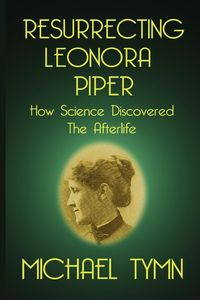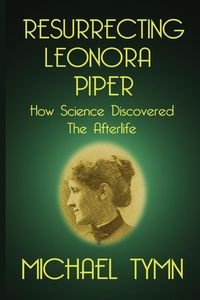Resurrecting Leonora Piper - Michael Tymn
Resurrecting Leonora Piper - Michael Tymn
- How Science Discovered the Afterlife
EAN: 9781908733726
Symbol
780FBO03527KS
Autorzy
Michael Tymn
Rok wydania
2013
Elementy
232
Oprawa
Miekka
Format
15.2x22.9cm
Język
angielski

Bez ryzyka
14 dni na łatwy zwrot

Szeroki asortyment
ponad milion pozycji

Niskie ceny i rabaty
nawet do 50% każdego dnia
Niepotwierdzona zakupem
Ocena: /5
Symbol
780FBO03527KS
Kod producenta
9781908733726
Autorzy
Michael Tymn
Rok wydania
2013
Elementy
232
Oprawa
Miekka
Format
15.2x22.9cm
Język
angielski

Well before Darwinism, as it came to be called, impacted the educated world during the last four decades of the 19th Century, mainstream religion was in decline, as science and its concomitant, rationalism, took hold. Thomas Paine's book, The Age of Reason, published in three parts (1794, 1795, and 1807) influenced many educated people to repudiate their religious beliefs, including both God and the idea of an afterlife. For those who sat on the fence, unsure as to what to believe, Darwinism was the knock-out blow, since it was perceived as totally refuting the biblical account of creation as set forth in the Book of Genesis, which said that God created the world in seven days.
Falsus in uno, falso in omnibus - false in one, then false in all - seems to have been the logical conclusion. After all, if the Bible had been inspired by God, as religious leaders proclaimed, how could an all-knowing God be so wrong? Therefore, god must not exist, and if there is no god, then there must not be an afterlife, either.
If the spirits who communicated in the years immediately following the advent of Spiritualism in Hydesville, New York during 1848, are to be believed, there was a plan behind it all - a plan that resulted from a growing loss of faith and spiritual values in an increasingly materialistic world. "It is to draw mankind together in harmony, and to convince skeptics of the immortality of the soul," was the reply given to Territory of Wisconsin Governor Nathaniel P. Tallmadge when he asked a communicating spirit claiming to be John C. Calhoun, former vice-president of the United States, about the purpose of the strange phenomena.
Some three years after the Society for Psychical Research (SPR) was founded in London in 1882, Leonora Piper, a young Boston, Massachusetts housewife, was "discovered" by William James, a pioneering psychologist, of Harvard University. Messages were delivered through Mrs. Piper that seemed to be coming from spirits of the dead. Soon after the discovery of Mrs. Piper, the American branch of the SPR (ASPR) was formed under the guidance of Professor James, and its primary task became the study of her mediumship, although it undertook the investigation of other mediums and paranormal phenomena, as well.
A number of other reputable scientists and scholars studied Mrs. Piper for a quarter of a century. Unfortunately, because of the resistance of mainstream science on one end and orthodox religion on the other, the latter seeing communication with spirits as demonic, the research has been, for the most part, filed away in dust-covered cabinets and written off by many as outdated. Skeptics deride it as the product of hallucination and delusion and conclude that Mrs. Piper was just another charlatan, one clever enough to dupe many intelligent men and women in hundreds of observations over some 25 years.
As the researchers came to understand, spirits face many obstacles in communicating with the earth realm and thus their messages are often fragmentary, confusing, distorted, meaningless, and wrong. Professor James called it the "bosh" material, seeing it as one major reason why Mrs. Piper's mediumship was not more widely accepted. In this book, author Michael Tymn filters out much of the bosh, permitting the reader to better appreciate the genuine communication. He explores the various interpretations, other than fraud, considered by the researchers. He approaches the subject as a lawyer arguing for the reality of spirit communication. He believes that those who carefully study the research and take the time to understand it will likely see Leonora Piper as the "white crow" that William James proclaimed her to be - the one who proved that all crows are not black, the one who gave science some very intriguing evidence that, under certain conditions, the "dead" can communicate with us.
EAN: 9781908733726
EAN: 9781908733726
Niepotwierdzona zakupem
Ocena: /5
Zapytaj o produkt
Niepotwierdzona zakupem
Ocena: /5
Napisz swoją opinię

